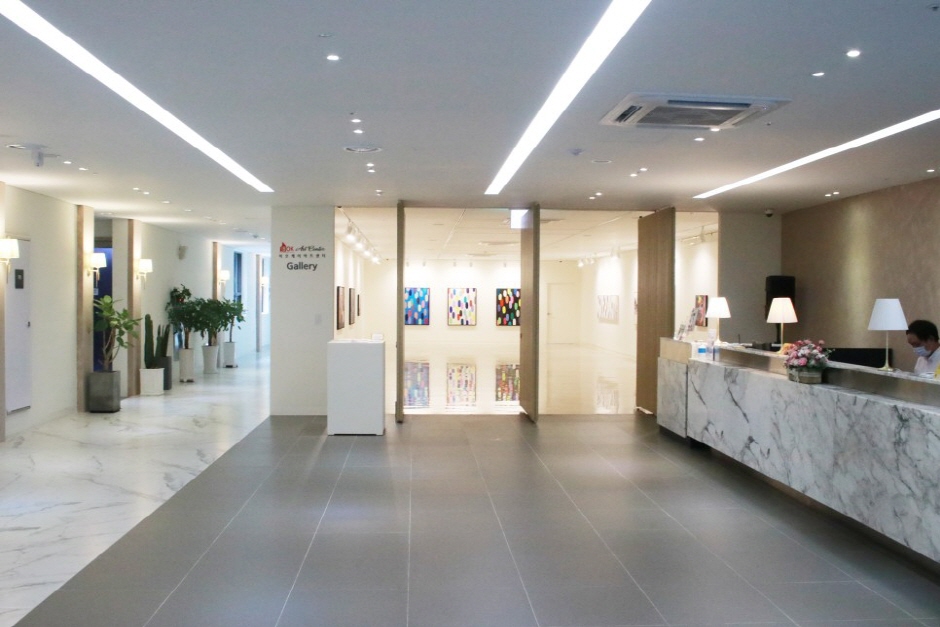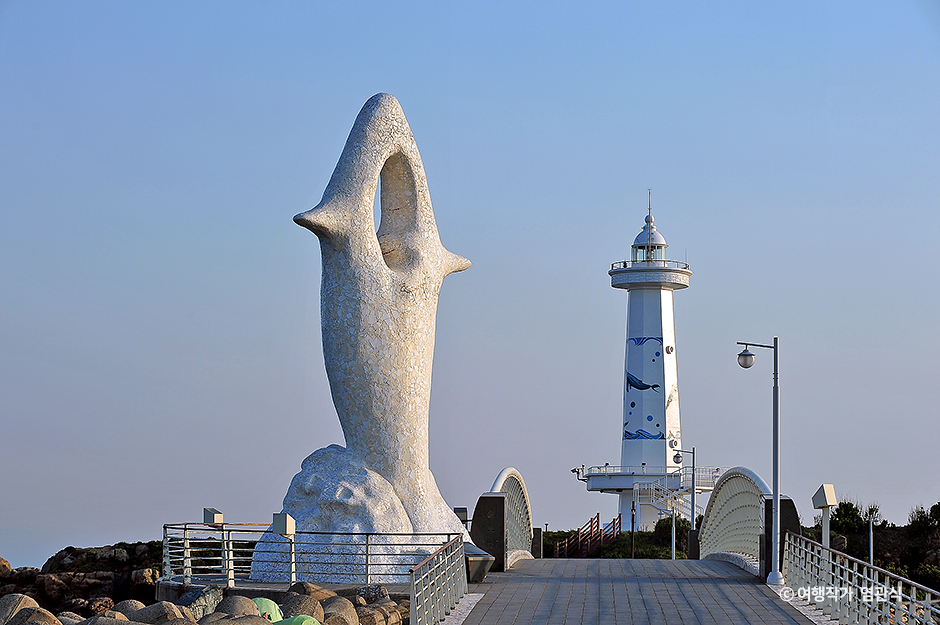BOK Art Center (비오케이아트센터)
2025-05-20
12, Gukchaegyeonguwon 3-ro, Sejong-si
+82-1877-4955
BOK Art Center is located in Bangok-dong, Sejong-si. It was opened in 2019 with the management philosophy of CEO I Gyu-sun, 'Let's create a happier living space.' The center is equipped with a performance hall where various performances are held, a gallery where various exhibitions are held, a hobby factory specialized for kidults, a Ccume Baking Class where you can enjoy baking, a bookstore, and a cafe.
Jisan Recreation Area (지산유원지)
2023-01-25
35-1, Jiho-ro 164beon-gil, Dong-gu, Gwangju
+82-62-221-2760
Jisan Recreation Area reopened around December 2016, resuming monorail operation after 11 years. The unique rattle of a monorail running on one rail gives passengers a thrill. If you ride the monorail, you can see the panoramic view of Gwangju and the top of Mudeungsan Mountain at a glance. The monorail starts on the mountainside, 50 meters away from the end point of the lift, along the forest road, and runs to and from the top of the mountain in Jisan Recreation Area, where the octagonal pavilion is located. After reopening, it became popular among the younger generation through social media and word of mouth as a unique amusement facility where you can enjoy thrills on Mudeungsan Mountain in Gwangju.
Bangeojin Port (방어진항)
2025-01-10
2 Seongkkeut-gil, Dong-gu, Ulsan
+82-52-209-3534
Bangeojin Port, designated as a national fishing port in 1971, is Ulsan's representative fishing port, with a large site for a fisheries cooperative's commission and an auction house. Various fish species, such as yellowtail, cutlassfish, Spanish mackerel, and anchovies, are caught. You can purchase fresh seafood from a nearby fish market or sashimi restaurant and enjoy it immediately.
The promenade along the breakwater reaches Seuldo Lighthouse, an excellent photo spot, and the sea road leading to Bangeojin Port, Daewangam Park, Ulgi Lighthouse, and Ilsan Beach also boasts romantic scenery. Recently, to revitalize tourism resources, murals and floor designs for the northern breakwater, parking lots, etc., were developed, and a village museum, the Bangeojin Museum, was opened. It serves as a resting place for Ulsan citizens and provides many attractions for tourists.
Hwawon Park (화원동산)
2024-04-08
40-14 , Samunjin-ro 1-gil, Dalseong-gun, Daegu
+82-53-659-4465
Hwawon Park, a vast park beside the Nakdonggang River, is steeped in history. The river, once bustling with Samunjin Quay, where ships laden with goods frequented, now features Samunjin Ferries. Visitors can access Dalseong Marsh Ecological Park via a floating walkway across the river. In the vicinity, the Samunjin Jumakchon Village offers traditional beverages and delicacies, including makgeolli (unrefined rice wine) and pajeon (green onion pancake). With well-maintained walking trails, cafés, and picnic spots, the park serves as an ideal destination for family outings.
Sejong National Arboretum (국립세종수목원)
2025-05-20
136, Sumogwon-ro, Sejong-si
+82-44-251-0001
The Sejong National Arboretum, which is about to open as the first urban arboretum in Korea, was built on an area of 65 ha adjacent to the Sejong Government Complex, where several government ministries are located. It is possible to see 2,834 species of 1.72 million plants (including 45,958 trees) under various themes such as the nation's largest four-season greenhouse, traditional Korean garden, Cheongryujiwon for study, and bonsai garden. It is another national arboretum established following the Baekdudaegan National Arboretum following the National Arboretum Expansion Plan for conserving and developing genetic tree resources by climate and vegetation zone.
Hwanbyeokdang Pavilion (환벽당)
2023-01-25
10, Hwanbyeokdang-gil, Buk-gu, Gwangju
+82-62-510-1500
Hwanbyeokdang Pavilion was built by Yeongcheonja Sinjam and was also called Byeokgandang, which is recorded in Go Gyeong-myeong's Yuseoseongnok. The building has a hipped-and-gabled roof with three bays in the front space and two bays in the inside space. It is a modified form in which the two rooms in the middle are used as rooms, and the front and right sides are floors. Originally, it was a traditional pavilion, but it seems to have changed to its current form as it was expanded later. A tablet written by Uam Song Si-yeol hangs here, and the poems of Seokcheon Im Eok-ryeong and Jo Ja-i are on a signboard. There are two poems written by Jeong Cheol about Hwanbyeokdang Pavilion, which are published in Songgangsokjip and Gwangjumokji. Jeong Cheol's 4th-generation descendant Jeong Su-hwan bought it from Kim Yun-je's descendants, and Yeon Il-jeong's family is currently managing it.
Chungjangsa Shrine (충장사)
2023-01-25
13, Songgang-ro, Buk-gu, Gwangju
+82-62-613-5407
When you reach Baejae along the tourist road leading up to Wonhyosa Temple, you can see the well-maintained tomb and the magnificent building of Chungjangsa Shrine on the left. It was built in 1975 as a memorial to General Kim Deok-ryeong, born in Mudeungsan Mountain. In the precincts, there are the shrine, where Kim Deok-ryeong's portrait and command paper are enshrined; the east room and west room; Eullyun Monument and Commentary Monument, the relics hall; Chungyongmun Gate; and Ikomun Gate. In the relics hall, the clothes of 'General Kim Deok-ryeong,' designated as Important Folk Material, and the coffin excavated from the general's tomb, as well as his handwriting, are on display. On the hill behind the shrine is Kim Deok-ryeong's tomb and tombstone, as well as his family's tomb.
Yangnim-dong Penguin Village Craft Street (양림동 펭귄마을공예거리)
2025-10-24
92-8 Baekseo-ro, Nam-gu, Gwangju
Yangnim-dong Penguin Village Craft Street is a narrow alleyway located behind the Yangnim-dong Community Center. The village, named because of the way the elderly residents appear to waddle like penguins, has become an exhibition space of life in the 70s and 80s. Villagers cleaned up empty houses that had been burnt down and left unattended in the past, brought discarded items, and began displaying them on the village walls. "Let's be thankful for living at that time" was engraved on the village wall. It also has historical culture, such as the House of Choe Seunghyo, the House of Missionary Uilsa, and Owen Memorial Hall. The Penguin Jumak in the middle of the village was the residents' gathering place, selling small but necessary items. Various workshops, such as leather workshops, textile workshops, and carpentry workshops, are located on Craft Street, so you can purchase pretty crafts or experience upcycling crafts with a retro vibe in which the historical and the modern coexist.
Oeosa Temple (오어사(포항))
2023-01-25
1 , Oeo-ro, Nam-gu, Pohang-si, Gyeongsangbuk-do
+82-54-292-2083
Oeosa Temple in Unjesan Mountain is a place where the deep scent of Buddha can be felt with a lake that looks like a dragon wrapped around it and the strangely-shaped cliffs which harmonizes like an oriental painting. Oeosa Temple is a sacred place where the four great patriarchs of Silla were born. This temple was built during the reign of King Jinpyeong (579-632), the 26th ruler of Silla. It was originally called Hangsasa Temple, but when Great Master Wonhyo and Zen Master Hyegong practiced religious asceticism here, a contest was held to revive the fish in the stream with religious power. However, one of them did not survive, and the other did and swam vigorously.
So each argued that he himself saved the fish, so they called it Oeosa Temple by writing the characters 'O' and 'Eo.' Daeungjeon Hall has a hip-and-gable roof with three bays in the front and two in the side. It was rebuilt in the 17th year of King Yeongjo of the Joseon dynasty (1741). Around the temple, the beautiful natural scenery of Unjesan Mountain and the blue water of Oeoji are spectacular. Jajangam Hermitage can be seen on the rocky cliff, and Wonhyoam Hermitage can be seen to the west of Oeosa Temple. Daeungjeon Hall (Gyeongbuk cultural heritage) has a national treasure bell, Buddhist monk Wonhyo's hat, and many other relics.
Guryongpo Port (구룡포항)
2025-01-21
222-1 Homi-ro, Nam-gu, Pohang-si, Gyeongsangbuk-do
+82-54-270-5977
Guryongpo Port, located on the way from Pohang Homigot to Gampo, is a place that took the shape of a port when a pier and a breakwater were built in 1923 during the Japanese colonial period. Currently, it has facilities of about 600 meters of the northern breakwater, 400 meters of the southern breakwater, and 600 meters of a wharf and has a loading capacity of 334,000 tons.
Guryongpo Modern Culture and History Street is nearby, where visitors can see traditional Japanese houses. Guryongpo Market is also nearby, allowing visitors to enjoy the friendly atmosphere of the local market and delicious food. Many places are selling half-dried saury, a local specialty, and it is known as the nation's largest producer of snow crabs, so visitors can enjoy good quality half-dried saury and fresh snow crabs.




 English
English
 한국어
한국어 日本語
日本語 中文(简体)
中文(简体) Deutsch
Deutsch Français
Français Español
Español Русский
Русский